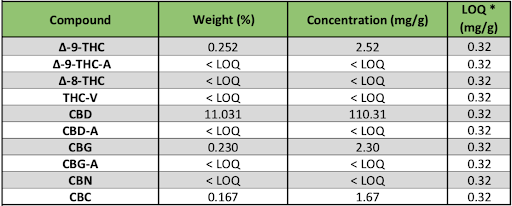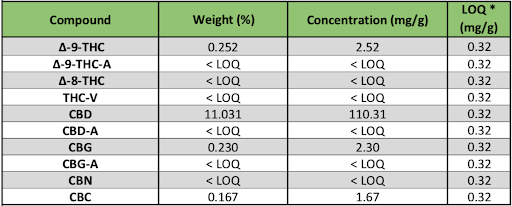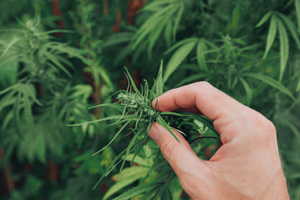Uncategorized
Understand CBD Lab Results
Laboratory studies for testing CBD have found a number of potential benefits, both physical and mental. However, if you’re someone who likes to see the data for themselves, rather than taking someone else’s word for it, you might be struggling to understand CBD lab results.
The good news is, it may not be as difficult as you think. Many top-quality brands provide lab results for everything they sell. Once you know how to read them, you’ll have a much better idea of what to expect from the product.
In this article, we’ll take a look at CBD lab results to help you have a better understanding of CBD product composition. Let’s get started!
Why Lab Reports Are Necessary
The CBD industry is growing at a breakneck pace. Because of this, the FDA is struggling to keep up. Hundreds, perhaps thousands, of new brands have appeared on the market in the last few years and there are currently no federal quality or content control requirements for CBD products.
Although growth in the industry highlights the effectiveness and popularity of CBD products, this also means there are a number of poor quality products flooding the market from fly-by-night companies looking to make a quick buck. Even worse are the reports of harmful synthetic knock-offs. As a consumer, it’s important to be informed and careful when shopping around.
For this reason, reputable brands have begun to publicly display the lab results for their CBD products. The goal is to ensure the best products, having gone through comprehensive state-level requirements, are readily available. In today’s market, this level of transparency is crucial for consumers.
Understand CBD Lab Results (3 Important Factors)
If you don’t know what to look for, CBD lab results can be confusing. In addition to how much CBD is in the product, you’ll see a list of other compounds, each with weight distribution and concentration in mg/g. Breaking this information down into three important factors will make it easier to understand. Let’s start with how much CBD is in the product.
1. How Much CBD Is in the Product?
For starters, it’s good to know how much CBD is in the product you’re considering. Its CBD level will determine the potency of the liquid or oil, which is crucial for dosing. For this, you can refer to the cannabinoid distribution in the lab results:

As you can see, this particular product is about 11% CBD. In addition, there are trace amounts of some other compounds, which we’ll talk about in a minute. However, while this statistic gives us the level of concentration of CBD, it does not give us the exact amount.
To see how much CBD is really in the product, we need to refer to the compound analysis:

In this particular case, CBD is listed in the middle of the chart and we can see that this product has 110.31 mg/g in it. Since 1g is about 1ml, we can calculate the total CBD content in the bottle by multiplying 110.31 by the ml amount in the bottle, which in this example is 30ml. This calculation gives us 3309.3mg, confirming the approximated amount listed on the packaging as 3000mg.
Now we know that this product is what it says it is and feel more confident when making the purchase. This information also goes a long way when determining dosage.
2. Is There THC in This Product?
There are two basic types of CBD products: full-spectrum and isolates. CBD isolate is a purified form of CBD, which has been processed to remove all other compounds. For those interested in the benefits of CBD without the other compounds, this is a good option.
Full-spectrum products, on the other hand, may contain small amounts of other compounds derived from the hemp plant. These compounds are a natural part of the process and offer their own health benefits. They have also been shown to interact with CBD and other cannabinoids, making a full-spectrum oil more effective at treating pain, anxiety, and other ailments, even in pets.
The source of CBD, the hemp plant, naturally contains a small amount of THC, which is the chemical in the marijuana plant that gets you “high.” However, the trace amounts in CBD products are far too small to have any effects, although it’s important to verify that the amount of THC is at or below 0.3%, which is the legal limit.
Again, we can refer to the lab results:

Using our example, we can see that this product contains 2.52 mg/g of THC, equal to 0.252% of the concentration. This is lower than the legal limit of 0.3%, so we know we have a verified, high-quality product.
3. What About the Other Compounds?
Of course, in addition to CBD and THC, there are other compounds that can be found in a full spectrum product. For the most part, these are considered a natural part of the product with their own potential health benefits to help make a product more effective.
The other compounds found in the product are listed along with CBD and THC, as shown in the image above. You may notice that many of them are listed as “< LOQ.” This stands for less than the Limit of Qualification, meaning the compound exists in such trace amounts that it will have no bearing on the product itself.
According to the current research being conducted on CBD and THC, these other compounds seem to have very little effect overall. Although some of them work similarly to CBD, such as CBC and CBG, they are not something that you need to worry about as they are a natural part of the process and have not been shown to have any adverse effects.
Finding the Best CBD Products
When it comes to purchasing CBD products, learning to understand CBD lab results will help you to make a smart buying decision. When you know how to read a lab report, you’ll be able to find effective, high-quality CBD oils and isolates for treating anxiety, depression, pain, seizures, and even heart disease.

